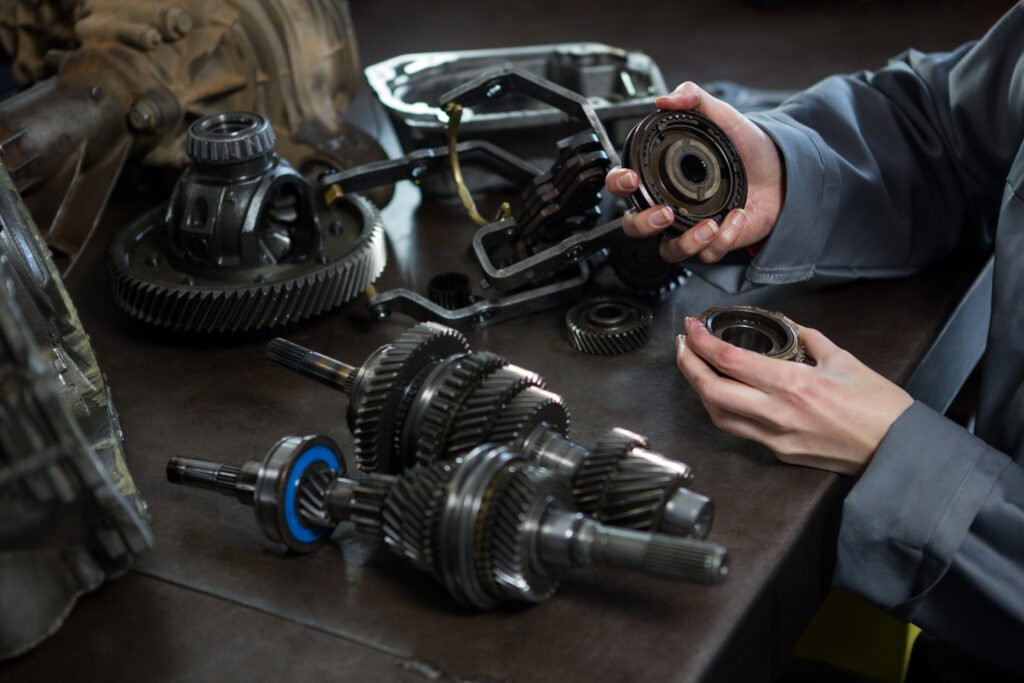Mechanical engineering is the backbone of industries ranging from automotive to aerospace, heavy machinery, and manufacturing. Among the essential components that keep machines running smoothly, bearings, gears, and shafts stand out as critical parts in high demand. These components play a fundamental role in motion control, power transmission, and mechanical efficiency.
In this article, we will explore why bearings, gears, and shafts are crucial, their types, applications, and why their demand remains strong across industries.
1. Bearings: The Backbone of Rotational Motion

What Are Bearings?
Bearings are machine components designed to reduce friction between moving parts while supporting loads. They enable smooth rotation and linear motion in various applications, from industrial machinery to everyday appliances.
Types of Bearings
- Ball Bearings: Used in high-speed applications such as electric motors, automotive wheels, and industrial equipment.
- Roller Bearings: Handle heavier radial loads, making them suitable for conveyor systems and gearboxes.
- Tapered Roller Bearings: Designed for applications requiring both radial and axial load handling, commonly found in vehicle wheel hubs.
- Needle Bearings: Ideal for applications with limited space and high load capacity, like transmissions and aerospace components.
- Plain Bearings (Sleeve Bearings): Used in heavy-duty applications like turbines, compressors, and agricultural machinery.
Applications of Bearings
- Automotive Industry: Bearings are used in engines, wheel hubs, and transmissions.
- Aerospace Sector: Critical for jet engines, landing gear, and navigation systems.
- Industrial Machinery: Found in conveyor belts, pumps, and CNC machines.
- Renewable Energy: Wind turbines use high-precision bearings for efficient energy generation.
Why Bearings Are in High Demand
- Rising industrial automation requires reliable motion control components.
- Growth in automotive and electric vehicle (EV) production.
- Increased focus on renewable energy sources like wind and hydroelectric power.
- Expanding aerospace and defense sectors.
2. Gears: The Heart of Power Transmission
What Are Gears?
Gears are mechanical components with teeth that interlock to transmit motion and torque. They are essential for adjusting speed, direction, and power in machinery.
Types of Gears
- Spur Gears: Simple and efficient, used in clocks, conveyors, and industrial machines.
- Helical Gears: Provide smoother operation and higher load capacity, commonly found in automotive transmissions.
- Bevel Gears: Used for transmitting motion between intersecting shafts, ideal for differential drives.
- Worm Gears: Offer high torque reduction and are widely used in elevators and heavy machinery.
- Planetary Gears: Found in automatic transmissions and robotic systems for efficient power transmission.
Applications of Gears
- Automotive Industry: Found in gearboxes, steering systems, and engines.
- Industrial Machines: Used in lathes, milling machines, and conveyors.
- Robotics and Automation: Essential for precise movement control in robotic arms.
- Wind Energy: Gearboxes in wind turbines optimize rotational speed for power generation.
Why Gears Are in High Demand
- Increased production of electric and hybrid vehicles.
- Growth of industrial automation and robotics.
- Expansion of renewable energy projects.
- Advancements in aerospace technology.
3. Shafts: The Core of Mechanical Systems
What Are Shafts?
Shafts are cylindrical components used to transmit power between rotating elements like gears, pulleys, and motors. They play a vital role in mechanical systems by ensuring efficient power transfer.
Types of Shafts
- Transmission Shafts: Used in automotive and industrial applications for power transmission.
- Axles: Support vehicle wheels and transfer power from the engine to the wheels.
- Spindle Shafts: Used in machining tools like lathes and milling machines.
- Flexible Shafts: Allow for bending and slight misalignment in dynamic applications.
Applications of Shafts
- Automotive Industry: Driveshafts and axles are critical for vehicle motion.
- Manufacturing Equipment: Machine tools rely on spindle shafts for precision.
- Power Generation: Steam and gas turbines depend on shafts for energy conversion.
- Marine Industry: Propeller shafts are vital in ships and submarines.
Why Shafts Are in High Demand
- Rapid industrialization and increased manufacturing activities.
- Rising global automotive production.
- Expansion of renewable energy, requiring durable shafts for wind and hydro turbines.
- Growing aerospace and defense applications.
Conclusion
Bearings, gears, and shafts are the lifeline of mechanical systems, ensuring smooth operation and power transmission across industries. Their demand continues to grow due to advancements in automotive technology, industrial automation, renewable energy, and aerospace applications.
As industries move toward greater efficiency and sustainability, innovations in materials, lubrication, and manufacturing processes will further enhance the performance of these critical components. Engineers and procurement officers must stay updated on emerging trends to source the best-quality parts for their projects.
By understanding the importance, applications, and market trends of these mechanical components, professionals can make informed decisions that optimize performance and efficiency in their respective fields.
For more mechanical engineering update, click here